Name Lee Coye Role Artist | Died September 5, 1981 Spouse Ruth Coye (m. 1928) | |
 | ||
Awards World Fantasy Award for Best Artist | ||
Lee Brown Coye
coye art auction_0001.wmv
Lee Brown Coye (July 24, 1907 – September 5, 1981) was an American artist.
Contents
- Lee Brown Coye
- coye art auction0001wmv
- Biography
- Recurring motifs
- Illustrator of the macabre
- Other work
- References
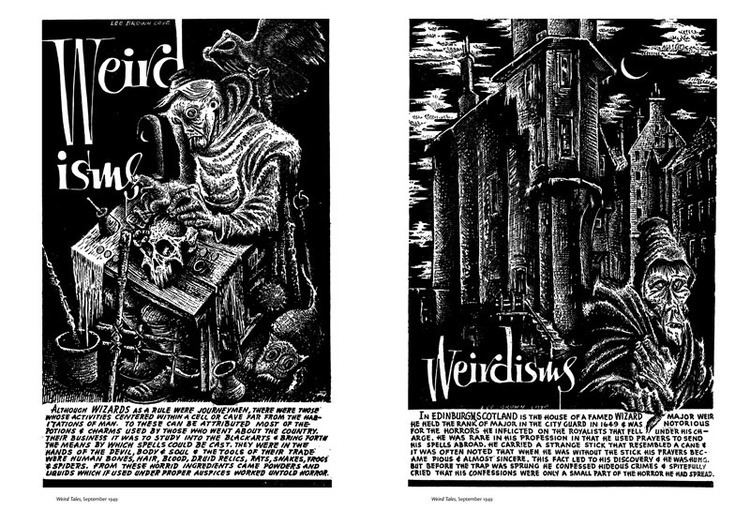
Coye is probably best remembered for his black-and-white illustrations for pulp magazines and horror fiction, but he produced a variety of works in other media.
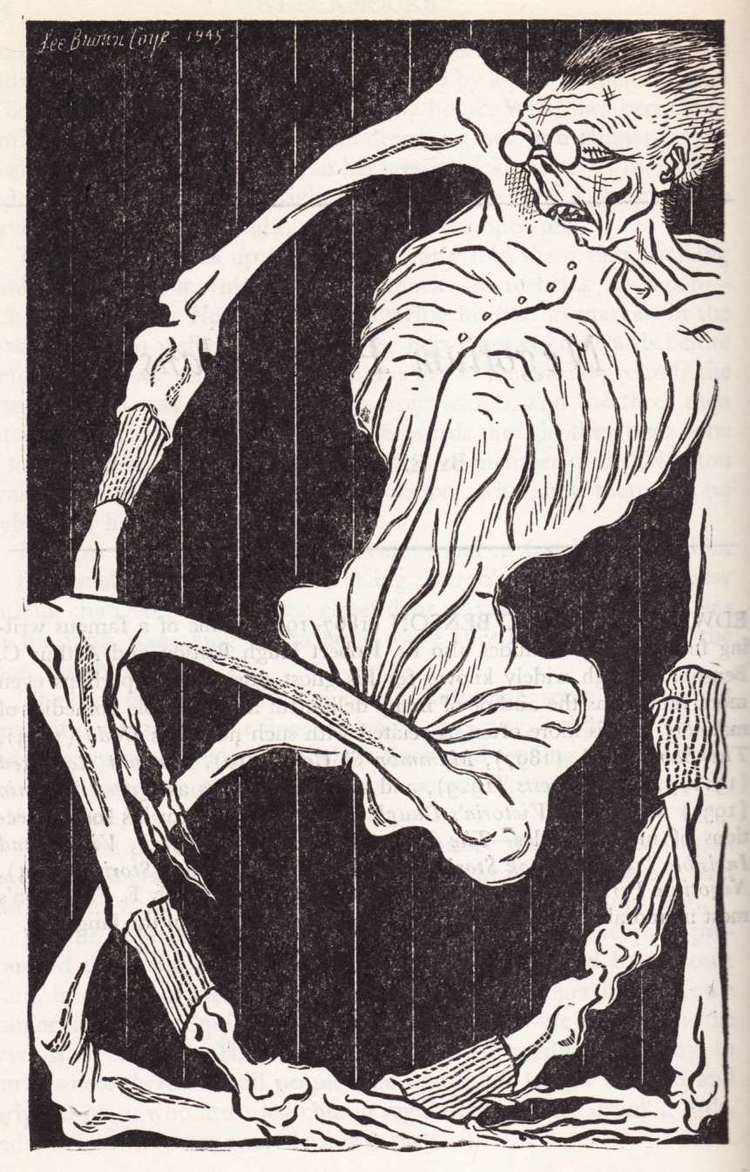
Biography
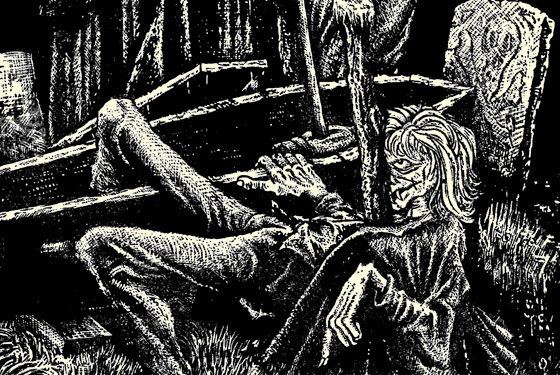
Coye was born in Syracuse, New York, and as a young man lived in nearby Tully. He spent his entire life in the Central New York area.
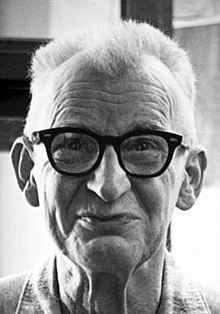
He and his wife, Ruth, lived in Syracuse for many years where Coye's activities included teaching adult art classes; working under the Works Progress Administration to paint a mural in the Cazenovia High School in 1934 (since destroyed); advertising for the WSYR Broadcasting System in upstate New York, producing a variety of commissioned works.
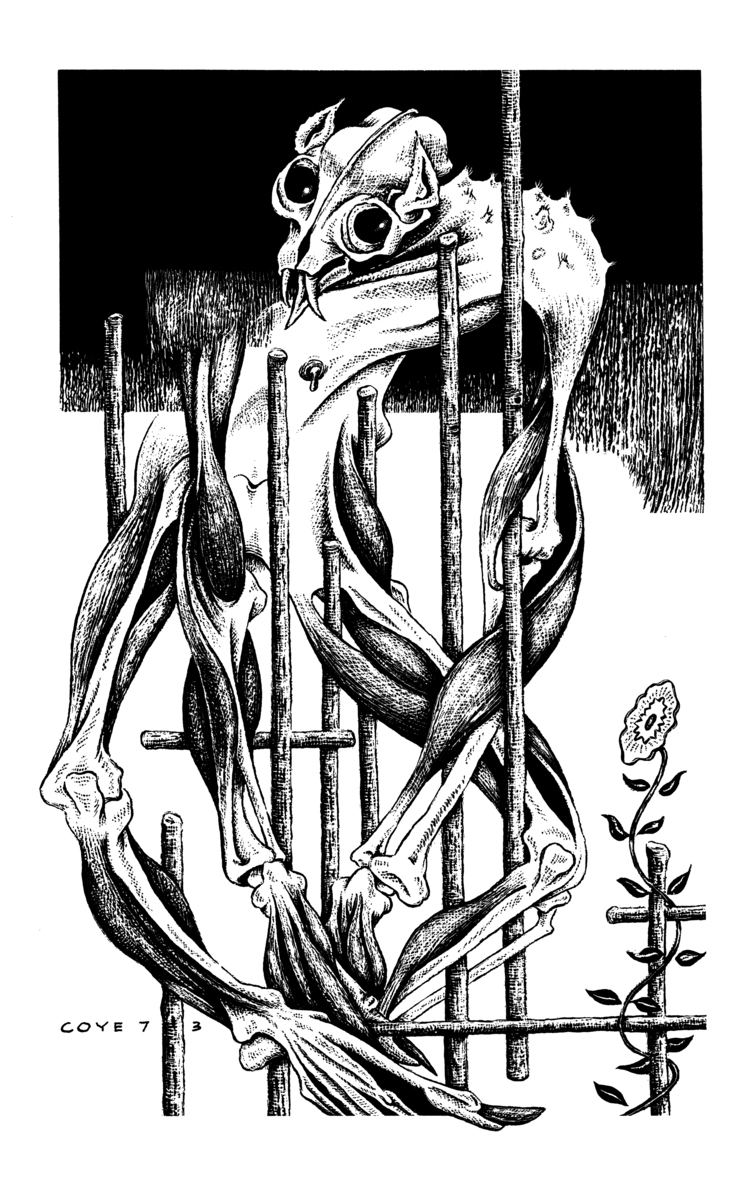
The Coyes settled in Hamilton, New York, in 1959 when Lee went to work for Sculptura, a small company that reproduced antique sculptures. The move to Hamilton allowed Coye to fulfill his ambition of returning to a small town and maintaining his own art studio.
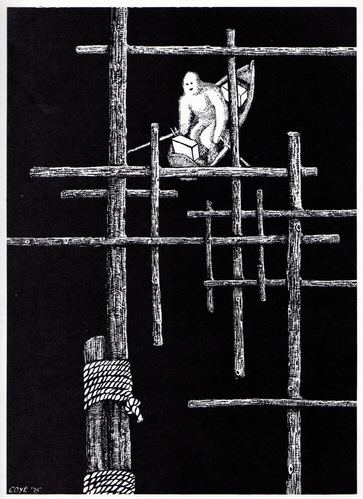
Coye was almost entirely self-taught as an artist, and his entire life was devoted to art-related work. As a young man, he attended one semester of night art classes, but his artistic knowledge and abilities came from many years of work and a thorough study of nature. His astute knowledge of body parts developed from his studies of anatomy and his work as a medical illustrator. He spent time attending operations and autopsies, thus becoming extremely familiar with the human body assembled or not.
Recurring motifs
One recurring feature in Coye's work is the motif of wooden sticks, often in latticework-like patterns. This was inspired by a 1938 discovery in an abandoned farmhouse.
Coye had returned to the North Pitcher, New York, area where he spent much of his childhood. While wandering deep in the woods, Coye discovered an abandoned farmhouse. Boards and pieces of wood which had been set perpendicular to one another surrounded the site. Neither inside nor out could Coye find an explanation for the presence of these crossed sticks. In the years following, Coye remained interested in the significance of his discovery.
When Coye returned to the site in 1963, there was nothing left of the building or the sticks (the area had suffered severe flooding), and he never found out why the sticks were there or who it was that had arranged them in such a manner. Because of the strangeness of the entire experience, these forms never left Coye, and they appear in many of his paintings and illustrations.
The incident also inspired Coye's friend Karl Edward Wagner to write the award-winning story "Sticks".
The crescent moon was an early Coye motif in paintings and illustrations. The whale became a later signature motif. Coye fashioned wooden sculptures, silver pendants and pins, engravings, drawings, and a large painting of the whale. One very fine example is in the Morrisville State College Library collection the 3-foot-long (0.91 m) pine "Moby-Dick" sculpture created in 1965. Image of Moby Dick Sculpture
Illustrator of the macabre
Coye's fame as an illustrator of the macabre developed as a result of his drawings for three horror anthologies edited by August Derleth in the early 1940s, Sleep No More, Who Knocks, and The Night Side. That subsequently lead to additional work for Weird Tales, a popular pulp magazine. From 1945 to 1952, his covers and interior work captured images of horror and the supernatural. A review of Pulp Macabre: The Art of Lee Brown Coye’s Final and Darkest Hour said his work for Weird Tales produced "some of the magazine’s greatest covers and as well as some of the most memorable illustrations to ever appear in pulps". In the 1960s, Coye's work appeared in such magazines as Fantastic and Amazing.
Coye illustrated, as well as the H. P. Lovecraft collection, Three Tales of Horror, and two deluxe collections of pulp stories edited by Karl Edward Wagner and published by his imprint Carcosa : Manly Wade Wellman's Worse Things Waiting (1975) and Hugh B. Cave's Murgunstrumm and Others (1978). Coye won the World Fantasy Award for best artist in 1975 and 1978. Coye was in the midst of illustrating Cave's volume Death Stalks the Night, which would have been the fifth volume published by North Carolina publishing house Carcosa, when he suffered a crippling stroke and eventually died. The volume's editor, Karl Edward Wagner, abandoned plans to publish through Carcosa, however the volume was eventually issued, with the illustrations Coye had completed, by Fedogan and Bremer.
Other work
Although Coye is best known for his fantasy and horror illustrations, for more than fifty years his artistic output covered a much wider range. He was a watercolor, oil, and egg tempera painter, a muralist, a sculptor, a photographer, a silversmith, and an able builder of models and dioramas. From rats and beetles and disfigured bodies, to whales, mythic figures, and landscapes, Coye's subjects are as diverse as the media in which he worked. All of his work was executed with expert craftsmanship, and exhibits the originality that sprang from his renowned imagination and sense of humor. Coye created paintings, sculpture, and jewelry that are as beautiful as his illustrations are macabre. Image of Night Side cover
Coye's work is represented in numerous collections including the Metropolitan Museum of Art in New York, the Everson Museum in Syracuse, the Onondaga County Historical Society, Picker Art Gallery at Colgate University, the Morrisville State College Library, SUNY Oswego, Syracuse University, and private collections.
In 2015 Where Is Abby? & Other Tales was published. The book features some of Coye's “Chips and Shavings” stories, printed by “Mid-York Weekly” newspaper between 1964 and 1970.
The book Pulp Macabre: The Art of Lee Brown Coye's Final and Darkest Era was published in 2015. An article, with interviews by the editors of the book, described Coye's illustrations as "whimsical and cartoonish" at first glance but "spine-chilling" with a closer look.
